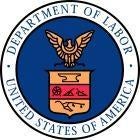The setting: Rikers Island correctional facility in New York City
The scene: A group of inmates gather around a cell where an employee has been locked in a cell, while other inmates pass around a ‘hit list’ of other employees they plan to target.

This is not a scene from a crime drama, like Oz or Law & Order, but rather the daily reality for a group of medical, dental and psychiatric professionals contracted by Corizon Health Inc. to provide services at Rikers Island. These employees are threatened, punched in the face, kicked and knocked unconscious with surprising and horrifying regularity. While the Occupational Safety and Health Administration were at Rikers to investigate incidents like the ones described above, an additional six reports of workplace violence were made.
Another investigation at a medical care facility in New York further highlights the issue of workplace violence in the health care industry. OSHA opened its investigation of Brookdale University and Medical Center on Feb. 7, 2014 after a nurse was brutally attacked by a patient with a known history of violent behavior. The nurse remains in a coma with permanent brain damage. While other worker injuries were not as severe, over 40 incidents of violence were reported at the facility between February and April. According to the Bureau of Labor Statistics data, 72% of injuries suffered by healthcare workers on the job are from assaults.
It would be easy to dismiss these as isolated incidents in a large, metropolitan city, but nearly two million American workers across the country report incidents of workplace violence every year. Many more incidents of workplace violence go unreported. According to the Census of Fatal Occupational Injuries from the Bureau of Labor Statistics, 475 of the 4,628 workplace fatalities in 2012 could be attributed to homicide. While workplace violence could happen to anyone at any time, there are certain groups of workers at particular risk: those who exchange money with the public, delivery drivers, healthcare professionals, public service workers, customer service agents, law enforcement personnel, and employees required to work alone or in isolated areas. Employers must take steps to protect their workers from preventable tragedies.
During the course of both investigations, OSHA found that Corizon and Brookdale respectively knew the dangers their workers faced every day, and that employees were being seriously injured as a result. And in both workplaces, there are well recognized measures that can be taken to reduce the risk of assaults against employees. For these reasons, OSHA issued willful citations to both facilities for failing to take practical steps to safeguard their workers against violence.
It is completely unacceptable for these employers and others to willfully disregard safety when a comprehensive workplace violence prevention program that includes simple preventive measures like protective barriers, zero-tolerance policies, alarm systems, and training can do so much to stop workplace violence. To better understand workplace violence, be sure to read OSHA’s fact sheet. Workers should not fear going to work every day, and they certainly shouldn’t worry whether they’ll come home each day.
Authored by Jordan Barab. Jordan Barab is the deputy assistant secretary of labor for occupational safety and health.



 />i
/>i

